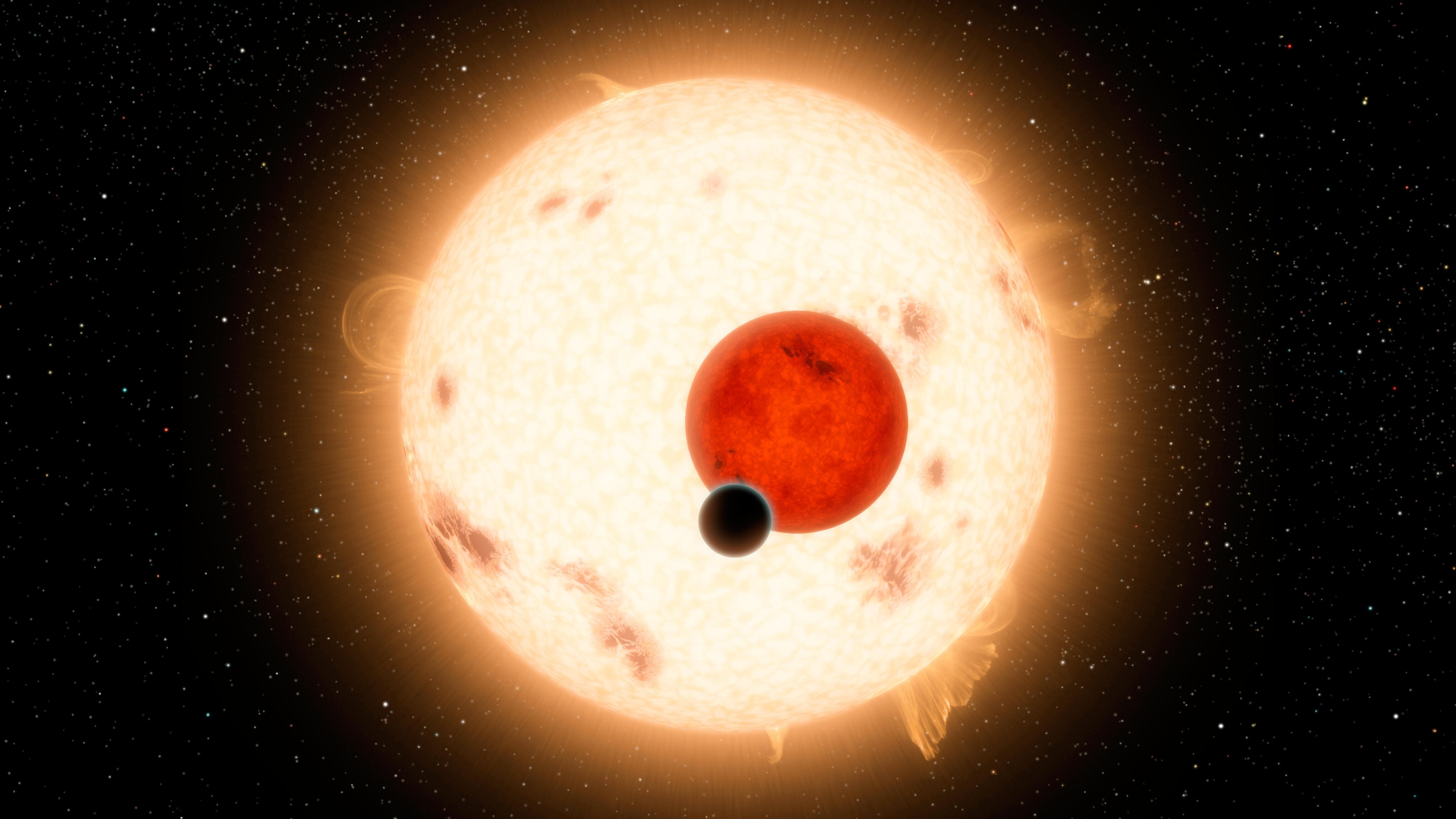
A rocket launch. Our nearest stellar neighbor. A Netflix show. All of these things have something in common: They must contend with the "three-body problem." But exactly what is this thorny physics conundrum?
The three-body problem describes a system containing three bodies that exert gravitational forces on one another. While it may sound simple, it's a notoriously tricky problem and "the first real worry of Newton," Billy Quarles, a planetary dynamicist at Valdosta State University in Georgia, told Live Science.
In a system of only two bodies, like a planet and a star, calculating how they'll move around each other is fairly straightforward: Most of the time, those two objects will orbit roughly in a circle around their center of mass, and they'll come back to where they started each time. But add a third body, like another star, and things get a lot more complicated. The third body attracts the two orbiting each other, pulling them out of their predictable paths.
The motion of the three bodies depends on their starting state — their positions, velocities and masses. If even one of those variables changes, the resulting motion could be completely different.
"I think of it as if you're walking on a mountain ridge," Shane Ross, an applied mathematician at Virginia Tech, told Live Science. "With one small change, you could either fall to the right or you could fall to the left. Those are two very close initial positions, and they could lead to very different states."
There aren't enough constraints on the motions of the bodies to solve the three-body problem with equations, Ross said.
Related: Cosmic 'superbubbles' might be throwing entire galaxies into chaos, theoretical study hints
But some solutions to the three-body problem have been found. For example, if the starting conditions are just right, three bodies of equal mass could chase one another in a figure-eight pattern. Such tidy solutions are the exception, however, when it comes to real systems in space.
Certain conditions can make the three-body problem easier to parse. Consider Tatooine, Luke Skywalker's fictional home world from "Star Wars" — a single planet orbiting two suns. Those two stars and the planet make up a three-body system. But if the planet is far enough away and orbiting both stars together, it's possible to simplify the problem.

"When it's the Tatooine case, as long as you're far enough away from the central binary, then you think of this object as just being a really fat star," Quarles said. The planet doesn't exert much force on the stars because it's so much less massive, so the system becomes similar to the more easily solvable two-body problem. So far, scientists have found more than a dozen Tatooine-like exoplanets, Quarles told Live Science.
But often, the orbits of the three bodies never truly stabilize, and the three-body problem gets "solved" with a bang. The gravitational forces could cause two of the three bodies to collide, or they could fling one of the bodies out of the system forever — a possible source of "rogue planets" that don't orbit any star, Quarles said. In fact, three-body chaos may be so common in space that scientists estimate there may be 20 times as many rogue planets as there are stars in our galaxy.
When all else fails, scientists can use computers to approximate the motions of bodies in an individual three-body system. That makes it possible to predict the motion of a rocket launched into orbit around Earth, or to predict the fate of a planet in a system with multiple stars.
With all this tumult, you might wonder if anything could survive on a planet like the one featured in Netflix's "3 Body Problem," which — spoiler alert — is trapped in a chaotic orbit around three stars in the Alpha Centauri system, our solar system's nearest neighbor.
"I don't think in that type of situation, that's a stable environment for life to evolve," Ross said. That's one aspect of the show that remains firmly in the realm of science fiction.







